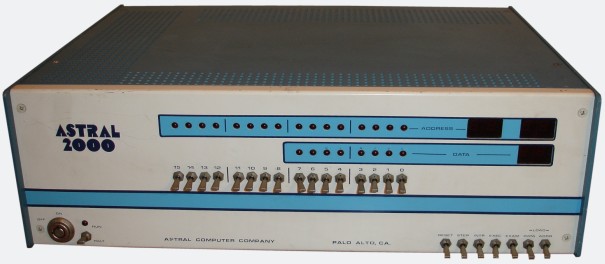
This is a machine that you won’t see very often. It’s the Astral 2000. It was first mentioned in the May 1976 issue of the Homebrew Computer Club newsletter and first advertised in the November issue of Byte magazine. It was manufactured by M & R Enterprises and designed completely by members of the Homebrew Computer club. It is an interesting machine in that it was designed with no wiring as everything plugs directly into an expandable bus system.
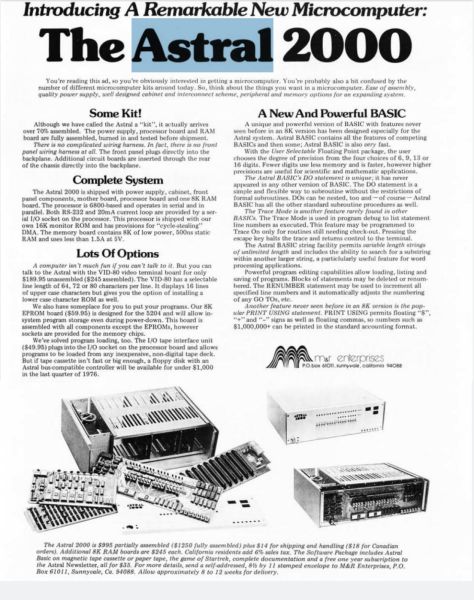
Technically the Astral 200 computer was sold as a kit but it was really nearly fully assembled with all boards already installed and tested before shipping. Basically the customer only had to assemble the cabinet, add the power supply, power cord and circuit boards and they were ready to go. The front panel has an LED display that shows a real time clock in hours, minutes and seconds and can also show a readout of programs in hex.
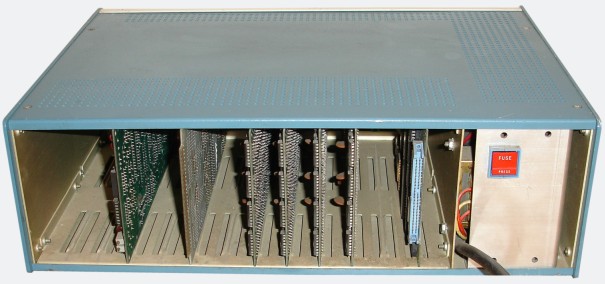
Initially there were three circuit boards made for the Astral 2000 including the main processor board and two memory boards. While most computers of the time utilized the Intel 8080 or Zilog Z80 the Astral used a Motorola 6800 MPU processor that could run in both serial and parallel. It also contained Motorola’s MIKBUG monitor and 384 bytes of 6810-1 RAM. The memory boards were an 8K RAM board and an 8K EPROM Board. The machine pictured above has a main board that has 12 expansion slots of which 7 are used. It contains the Astral Computer CPU Board, Astral Computer Universal I/O Board, 4 Astral Computer 8K Memory Boards and an Astral Computer Floppy Disk Interface Board.
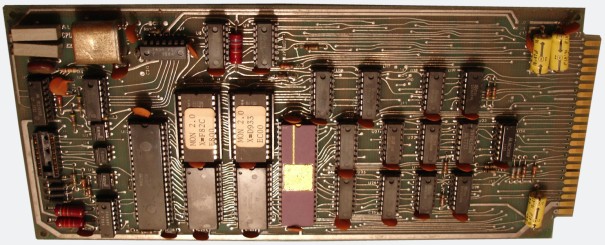
Lee Felsenstein, also of the Homebrew Computer Club, designed a video display module for the Astral 2000 called a VID-80 that plugs directly into the bus. The VID-80 allowed for 64, 72, or 80 character line length and could display up to 24 lines.
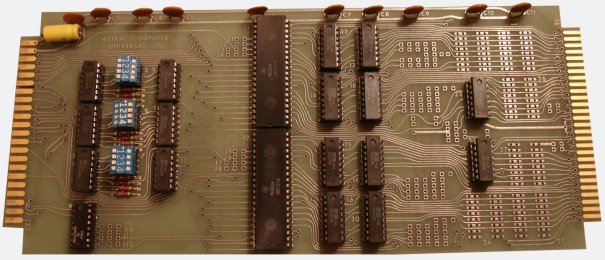
Other peripherals were to be designed for the Astral 2000 including digital tape decks, tape readers and floppy disks all interfacing with the bus system. A specially designed version of BASIC was used that could be run from either tape or PROM.
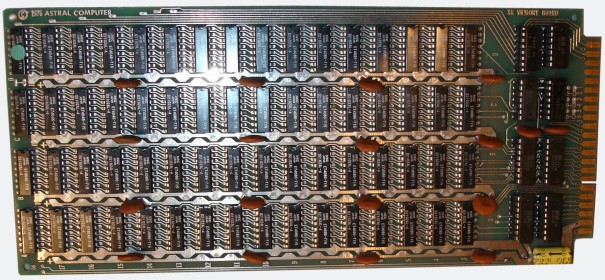
As I mentioned above this computer is pretty rare and very seldom comes up for sale. The most recent sale was for almost $2000.00 and I would suspect prices will move up given the notoriety of the individuals involved in the development of the machine and its rarity. I don’t know exactly how many Astral 2000’s were made and sold but it wasn’t many. If you’re a collector and have a chance to pick one up then do so.
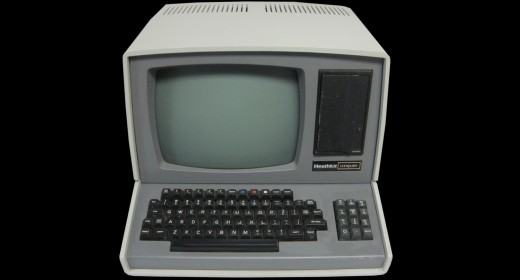
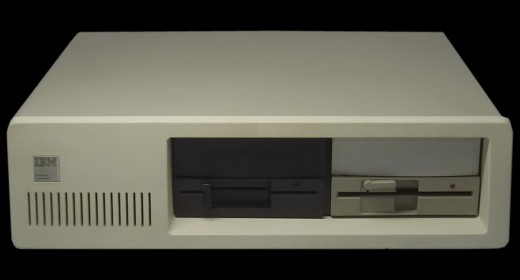
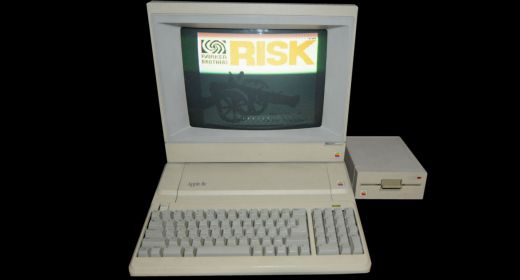
Nice article. This brings back memories. I have one of these computers. The disk controller runs two floppy 8 inch drives. (Shugart 801) One drive held the operating system and assembler. The other disk held the file that was being compiled and the output of the assembler. My computer does not have the switches on the front panel like the one pictured above. My front panel circuit board has a ROM bios chip on it so doesn’t have the lights and switches. I originally had a teletype to use with this but now I just connect to the serial port on a PC and use the PC as the display terminal. When this computer came out, Motorola had not yet developed their serial I/O chip so they were using their parallel I/O chip and using two of the lines to make a serial port. The problem was that it could only go 300 baud. I was living in Sunnyvale at the time and went to the office of M & R enterprises. I talked to Carl and he initially sold me the CPU board and memory boards that used the 2102 RAM chips. I went back later and bought the floppy disk controller board, I/O boards, and ROM board. I have a total of 9 boards. I also have an extender board which allows me to work on a board outside of the case. The RAM boards run hot. The ram boards pull 1.5 amps each and the ram chips themselves get hot. Each RAM board is 8K by 8 bits so it held 64 RAM chips. We have come a long way since then.